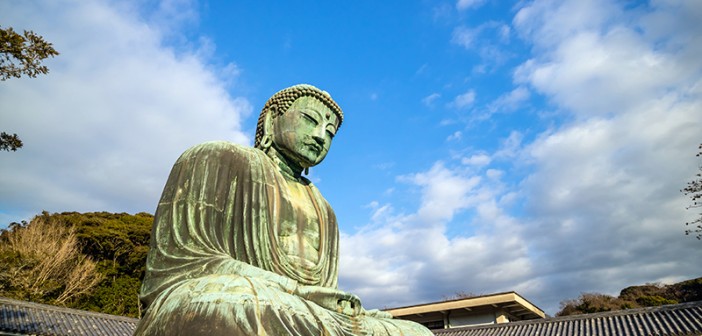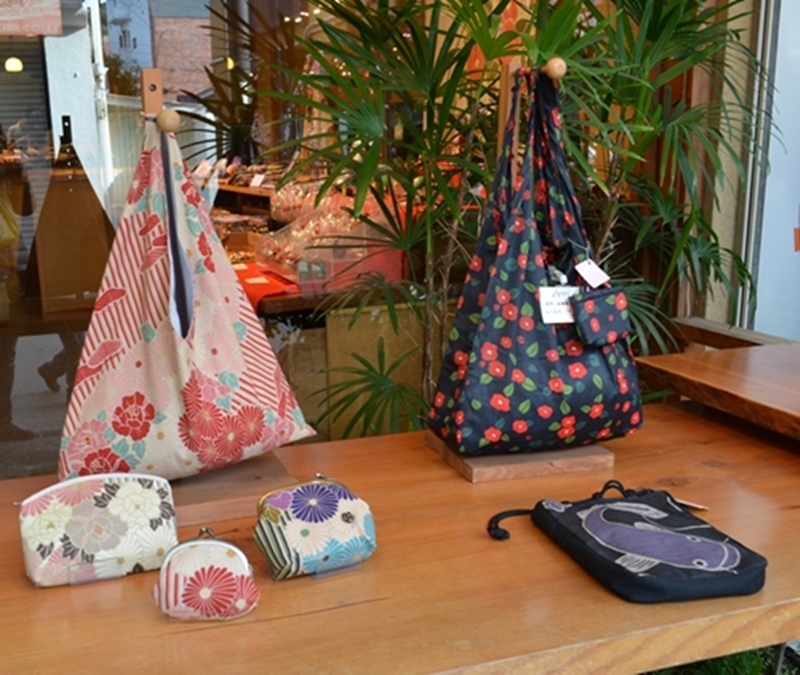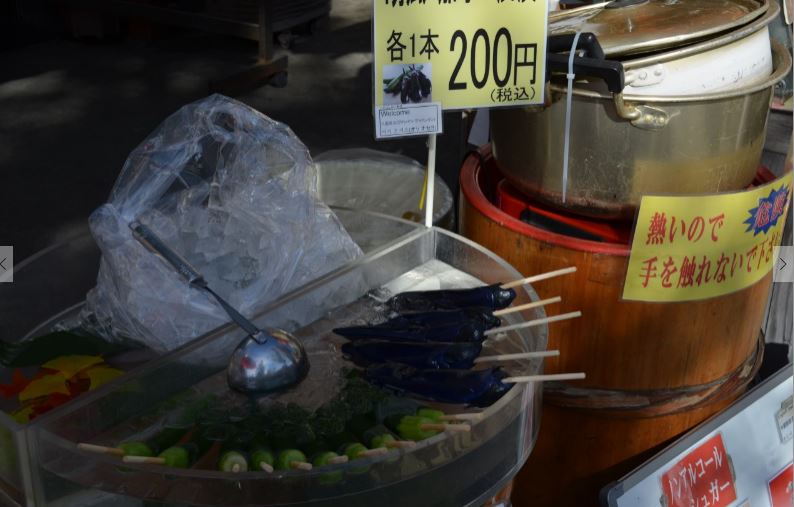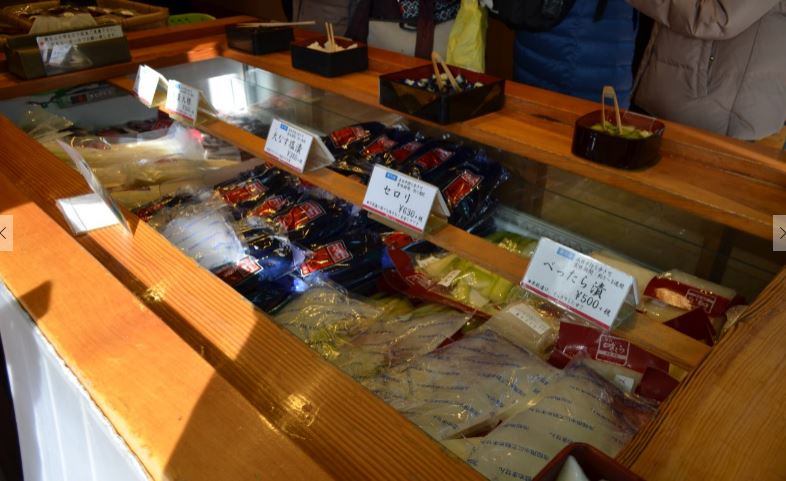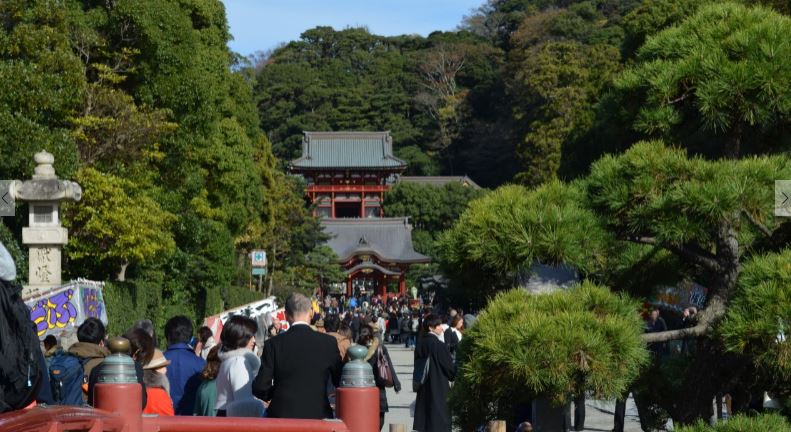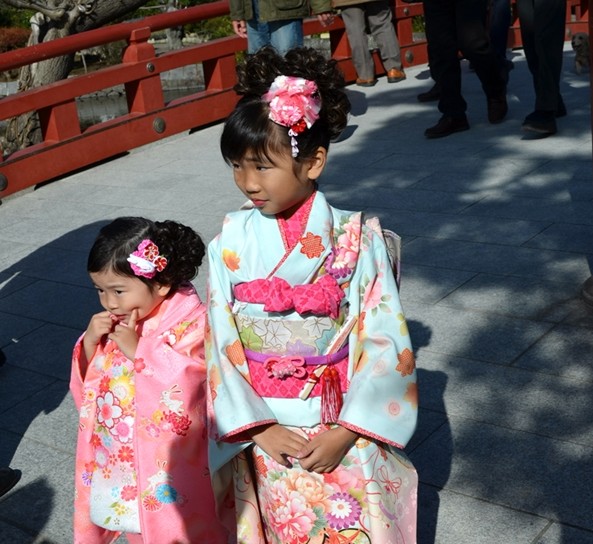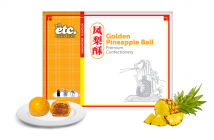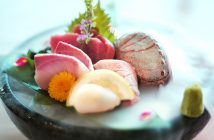Kamakura is a historical town in Kanagawa Prefecture in Japan. In Kamakura Era (12th century), Yoritomo Minamoto – the first shogun of Kamakura – established a new government in this town and consolidated his power to rule Japan from there. Kamakura Bakufu (the government) came to be prosperous and Kamakura became a centre of Japan where culture, politics and military intermingled. The population in Kamakura reached over 300,000 during its prime at that time.
From Yokohama, it takes only 30 minutes by train. You can get off at Kamakura station. It’s easy to get there so you don’t have to worry about getting lost.
Here are some of the highlights you can find in Kamakura.
Shopping
Powerful shrines or temples usually have a path going to the building and an entrance is located at the start point of the path. The town was spontaneously developed along the path. You can see numerous shops, restaurants and many other interesting items along the roadsides of the path.
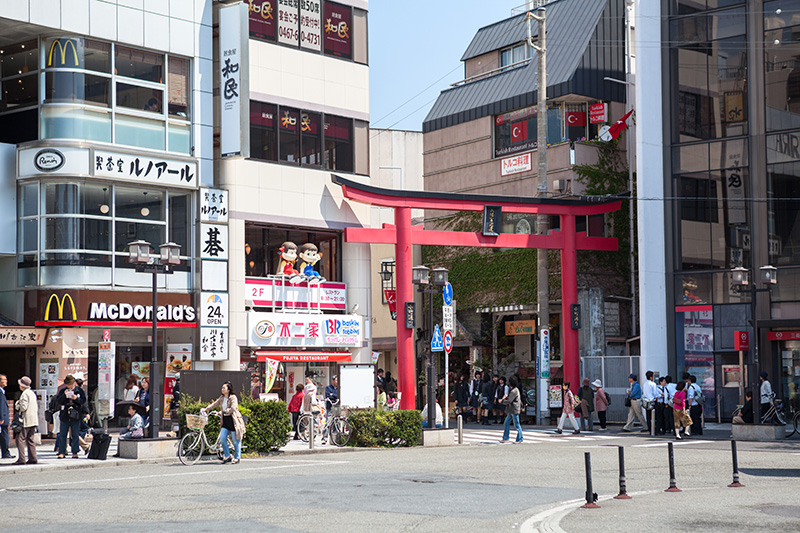
Torii at the entrance of shopping town is near the rail station square of the city. Photo © Kekyalyaynen | Shutterstock.
I found a nice bag shop along the way; the shop sells bags made by traditional Japanese cloth. Such Japanese bags are lightweight and convenient to use. When you don’t need to use it, you simply fold it and put in your bag. What’s more, the quality ensures that you get to use the bag for a long time. It is the Japanese traditional eco-bag!
There is also a traditional Japanese general store that sells Japanese paper (Washi) goods. On the shelves, you’ll be able to find beautifully designed notebooks made with traditional materials.
Food
If you are looking to have a taste of the local cuisine, look out for the Japanese pickles — which is essentially skewers of cucumber and eggplant immersed in iced water. The taste is fresh and salty! It is a very popular snack with the locals, especially in summer. You can buy one and eat it while walking along the streets.
There is another type of pickles called Tukemono. I found one Tukemono shop selling many kinds of pickles, and cut pieces of Tukemono are placed in small boxes for sampling. There are radish, celery, burdock, sour plum and many more. You can try as many as you want!
Tsurugaoka Hachimangu Shrine
Tsurugaoka Hachimangu Shrine is the biggest and most popular shrine in Kamakura. It was built by Minamoto Yoritomo, the first shogun of Kamakura, in 1063. Yoritomo was given this land by the Emperor of Japan who was in Kyoto for the victory of the conflict between Heike clan and Genji clan. He settled in Kamakura and built the shrine for his own Shinto deity. It has played an important role for Japanese rituals since then.
Today, the Shrine attracts thousands of people from Japan and all over the world. In summer, the shrine is especially beautiful with the contrast of the red building and greenery of nature.
Kamakura was a centre of trading with foreign countries especially China because of the costal location. The culture of Buddhism came into Japanese society and spread widely across Kamakura. That is why there are lots of temples, shrines and Buddha statues in Kamakura now.
A great Buddha statue sits within the Kotoku temple. It is a huge bronze statue and surprisingly, you can go inside the Buddha statue. At an imposing height of 13.35 metres, it is said to be the highest Buddha statue in Japan.
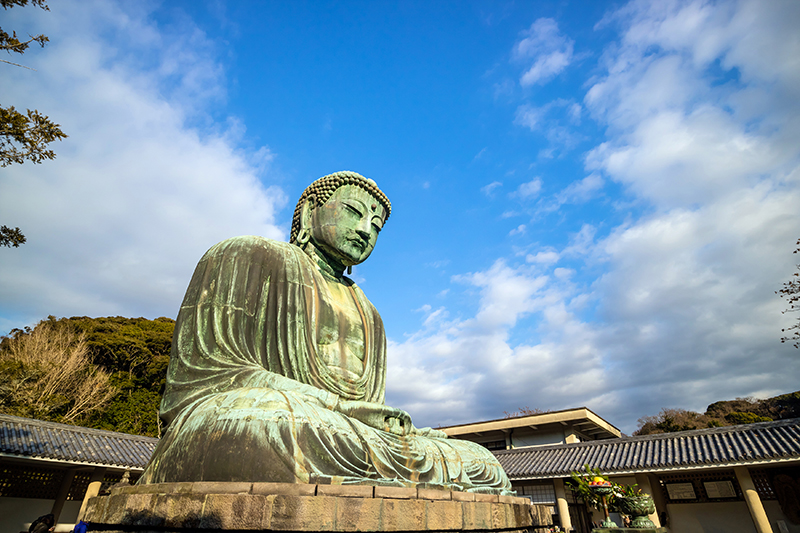
Daibutsu is a famous Great Buddha statue in Kamakura. Photo © f11photo | Shutterstock.
This is a hand-wash station located at the entrance of the temple. You have to clean yourself before entering the temple to make a prayer.

A typical hand-wash station in Japan. Photo © leungchopan | Shutterstock.
There is a rule which you have to follow – first you pick up the bamboo ladle with your right hand and fill up with water. Wash your left hand, and then shift the ladle to the left hand to wash your right hand. After that, pour some water to your left hand and put the water to your mouth to wash. Next you clean the ladle with the remaining water and put it back to the original place. This process has to be done with a ladle of water.
I met two pretty Japanese girls who were wearing traditional kimono while I was at the Shrine. The Japanese celebrate ‘Shichi Go San’ in one weekend in November. ‘Shichi Go San’ literally means the numbers seven, five and three. ‘Shichi Go San’ is an annual festival for kids to pray for healthy growth and longevity. The locals celebrate for girls who reach three and seven years old, and three and five years old for boys. The girls wear a traditional kimono on that day and go to shrines to pray.
There are a lot more things to see and do in Kamakura. Every season has its unique atmosphere, but one thing for sure – your breath will be taken away by the beauty of Kamakura in every season.

